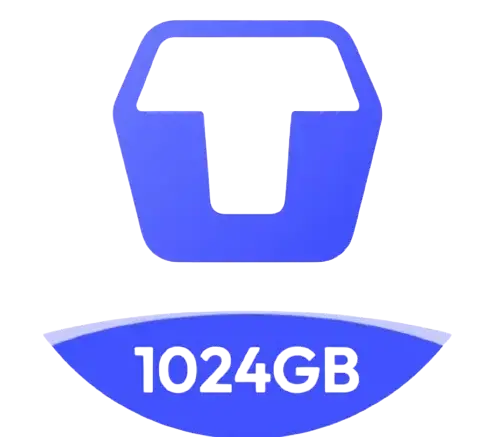TeraBox for Small Businesses: A Comprehensive Guide
In today’s digital age, effective data management is crucial for small businesses. Cloud storage solutions like TeraBox offer a cost-effective and efficient way to store, manage, and share data. This comprehensive guide explores how TeraBox can benefit small businesses, providing detailed insights and practical tips to optimize its use.
What is TeraBox?
TeraBox is a cloud storage service that provides users with a generous amount of free storage space, along with premium options for additional features. It offers a secure platform for storing various types of files, including documents, photos, videos, and more. For small businesses, TeraBox can be a game-changer, enabling efficient data management and collaboration.
Benefits of TeraBox for Small Businesses
1. Cost-Effective Storage Solution
One of the primary advantages of TeraBox is its affordability. Small businesses often operate on tight budgets, and TeraBox offers a free plan with a significant amount of storage. This can help businesses save on expenses related to physical storage devices and IT infrastructure.
2. Easy Access and Collaboration
TeraBox allows employees to access files from anywhere with an internet connection. This is particularly beneficial for businesses with remote teams or employees who travel frequently. The platform supports seamless collaboration, enabling team members to work on documents simultaneously and share files effortlessly.
3. Enhanced Security
Data security is a top priority for any business. TeraBox uses advanced encryption methods to protect stored data from unauthorized access. Additionally, it offers features such as two-factor authentication (2FA) and regular security updates to ensure data integrity.
4. Scalability
As a business grows, so do its data storage needs. TeraBox offers scalable storage solutions that can accommodate increasing amounts of data without requiring significant changes to the existing infrastructure. Businesses can easily upgrade their storage plans as needed.
Setting Up TeraBox for Your Business
Step 1: Create an Account
To get started with TeraBox, visit the official website and sign up for an account. The process is straightforward and involves providing basic information such as your email address and creating a password.
Step 2: Choose a Storage Plan
TeraBox offers a variety of storage plans to suit different needs. While the free plan provides ample storage for many small businesses, you might consider a premium plan if you require more space or additional features such as increased upload speeds and priority support. Downloading Premium Unlocked Free version is also not a bad option.
Step 3: Install the TeraBox App
For easy access, download and install the TeraBox app on your devices. The app is available for Windows, macOS, iOS, and Android. This allows you to sync files across multiple devices and ensures that your data is always up-to-date.
Step 4: Upload and Organize Files
Once your account is set up, start uploading your files to TeraBox. Organize your files into folders to make them easy to locate and manage. Use descriptive names for folders and files to enhance searchability.
Using TeraBox Features to Enhance Productivity
File Sharing and Collaboration
TeraBox simplifies file sharing with options to create shareable links or invite collaborators directly. This is particularly useful for projects involving multiple team members. You can set permissions to control who can view, edit, or download files, ensuring that sensitive information remains secure.
Backup and Recovery
Data loss can be catastrophic for any business. TeraBox provides reliable backup solutions, allowing you to automatically back up important files. In case of accidental deletion or hardware failure, you can easily recover your data from the cloud.
Version History
The version history feature allows you to keep track of changes made to documents over time. This is invaluable for collaborative projects, as it enables you to revert to previous versions if needed. It also helps in observing changes and maintaining a clear record of document revisions.
Integration with Other Tools
TeraBox can integrate with various third-party applications and tools that your business might already be using. This includes productivity suites like Microsoft Office and Google Workspace, enhancing the overall functionality and streamlining your workflow.
Best Practices for Using TeraBox in Small Businesses
Regularly Update and Backup Data
Ensure that your data is regularly updated and backed up to prevent any loss. Schedule regular backups and check that all important files are included.
Educate Employees on Security Practices
Train your employees on best practices for data security, including the use of strong passwords, recognizing phishing attempts, and the importance of regular software updates.
Monitor Storage Usage
Regularly check your storage usage to ensure that you do not exceed your plan’s limits. Routine clean up unnecessary files and optimize storage space to avoid additional costs.
Utilize TeraBox’s Search Functionality
TeraBox offers powerful search functionality to quickly locate files. Use tags and metadata to make files easier to find, and encourage your team to adopt these practices for efficient file management.
Conclusion
TeraBox offers a robust and cost-effective cloud storage solution for small businesses. With its user-friendly interface, secure data protection, and versatile features, it can significantly enhance your business operations. By following best practices and utilizing TeraBox’s full range of features, small businesses can streamline their data management, improve collaboration, and ensure the security of their valuable information.
Start using TeraBox today to take your small business to the next level. Whether you are looking to improve file sharing, secure your data, or simply need more storage space, TeraBox has the tools you need to succeed.

